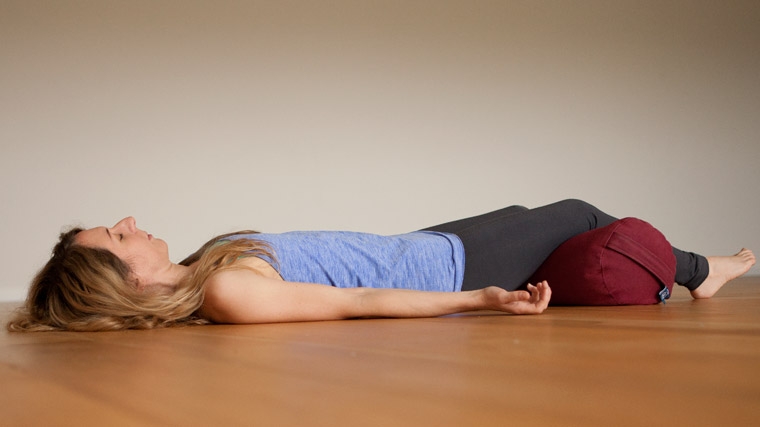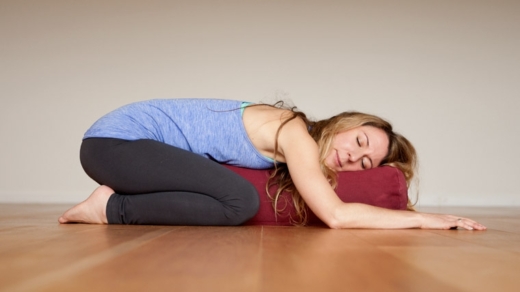When you’re feeling tense and time is short, try these 6 stress-busting yoga poses.
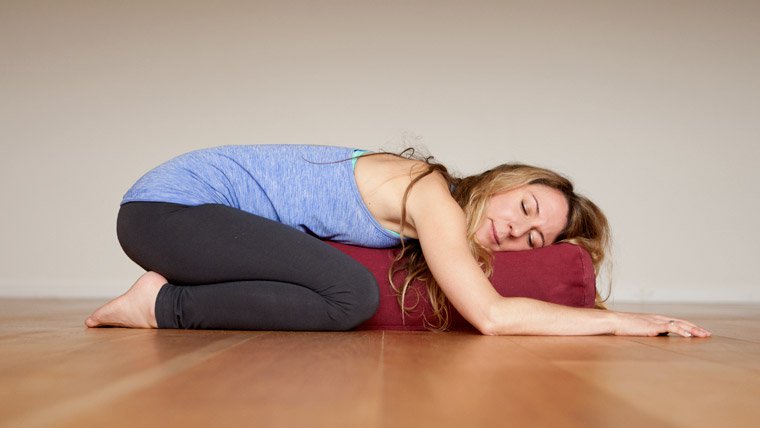
About this sequence
A regular yoga practice helps to regulate and relieve stress but sometimes, despite our attempts to organise and control it, life takes over and we only have a few minutes to spare. First of all, frustrating though it may be, try to remember yoga is as much about flexibility of the mind as it is about the body, and fighting facts will only exacerbate your stress levels. Know that it doesn’t matter whether the time you spend connecting to yourself is an hour and a half or five minutes; it’s the quality of your practice that counts.
Here are 6 yoga poses for you to try, either together or individually, that may help you to tap into that place where your stillness resides. Try and stay in each pose for 3 – 5 minutes, but always listen to your body and if you need to come out sooner, do. These poses may provide a stretch to areas of your body that feel tense or tight but this sequence is not about stretching or pushing, it’s about release; allowing yourself to be physically supported but also letting go of the shoulds and musts and what ifs and if onlys…
So even if you only have a few minutes, make them count; breathe deeply, draw inwards and completely absorb yourself in the present moment …
1. Reclined Butterfly pose with bolster
Why: This is my favourite pose when I’m feeling out of kilter. Physically, it provides a gentle stretch for the inner thighs, hips and fronts of the shoulders and a wonderful opening for the chest area / heart space – a place which tends to get physically constricted while we’re working at a desk, driving, texting, studying, etc. Emotionally, if we’re having a tough time in our personal lives, or if we’ve suffered from a cough or cold, this area can also feel tight and ‘closed down’.
This pose allows optimum opening for the breath to move through the diaphragm and spending a few minutes in this gesture of complete physical openness invites the mind to follow suit.
How: Lie back on a bolster or a couple of firm folded blankets / pillows with your bottom on the floor and the edge of the bolster at the small of your back. Place the feet flat on the floor with the inner edge of the feet together, gently let your thighs fall open so that the soles of the feet are touching and lay back along the length of the support. If this places too much strain on the groin area or inner thighs, support the knees with a couple of blocks or some books. Move the arms so they’re away from the body and turn the palms upwards. Tuck your shoulder blades into the back, release your shoulders and let your elbows feel heavy. Feel how your body is supported, the opening in your heart space, the rise and fall of your breath…
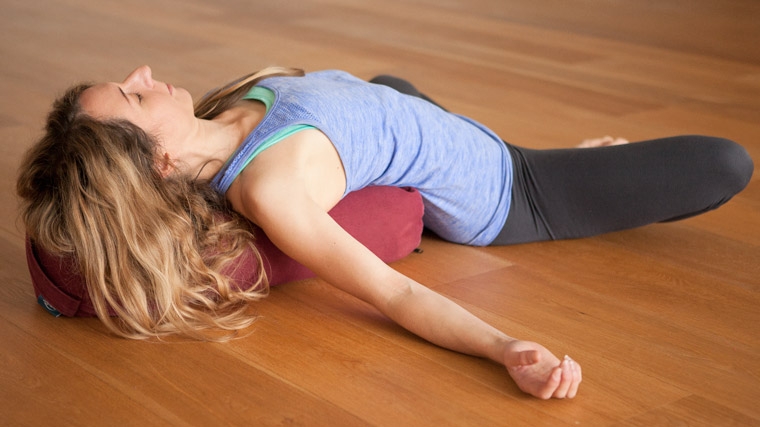
2. Supported child’s pose with bolster
Why: This is a lovely, nurturing, calming pose – a place to rest during a more active yoga practice but also a place to stay in its own right – a shell-shaped haven, if you will. Where reclined Butterfly pose opens space in the front of the body for breath to move more freely, supported child’s pose can help to elongate and stretch the spine and the back body whilst also relieving compression in the lower back. It can also help to heighten awareness of back-body breathing.
How: Lay a bolster, pillows / blankets in front of you and drape the length of your body over the raised support with your knees on either side. Lay your forearms on the floor and turn your head to rest on one side. Make sure your knees and neck are comfortable and remember to turn your head to the other side, half way through your time in this pose. Feel your breath spreading across the back of the body. Feel this expansion as you breathe in, the contraction as you breathe out …

3. Seated meditation with hands on heart
Why: Placing your hands – palm on palm – on your heart is a beautiful, instant way to connect with yourself. Feeling the warm touch of the palm directly on the skin of your heart space is nurturing and is a lovely way to tune into how you are really feeling.
Feeling the rise and fall of the chest area focuses awareness onto the breath and gradually you may feel it begin to slow down. From a physical perspective, sitting cross-legged opens the hips, groin, and outer thigh muscles. It also strengthens the back and stretches the knees and ankles.
How: Come into a seated position with your legs crossed. If you feel discomfort in the knees or you are finding your back is rounding so that you’re collapsing in the chest, sit on a bolster or a block. Alternatively sit in a chair. Place one palm at the centre of the chest and the other on top and close your eyes. Feel the base of the spine rooting down and the crown of the head lifting up, relax your face, shoulders and belly. Feel the wave of breath move from the belly towards the chest and spread across the collar bones…
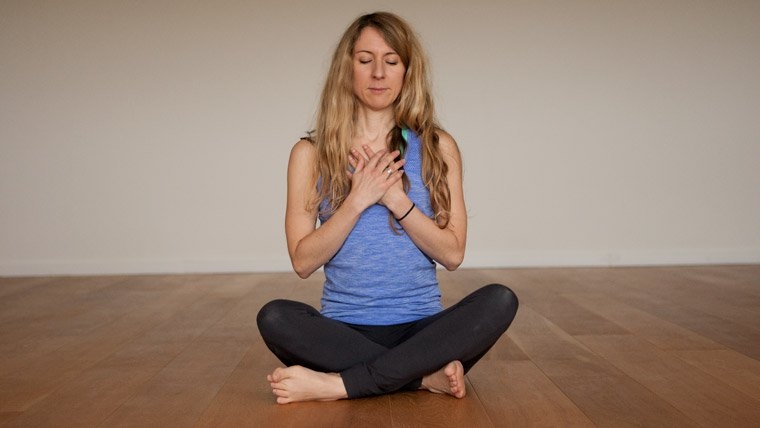
4. Legs up the Wall pose
Why: This pose is an instant refreshment for the legs – especially if you’ve been on your feet all day – and my go-to pose if I’m struggling to get to sleep. As it’s an inversion it brings lots of benefits such as improving your circulation and lymph flow. You can practise it with the hips slightly away from the wall and with your feet together or slightly apart – the most important thing is that your legs and feet are relaxed.
How: It may feel a little tricky getting into this pose it’s worth it! Start seated on the floor with your hip and thigh close to the wall, then bend your knees, slide your legs around and up the wall and scoot your bottom closer to it so that you’re lying on your back. The arms can extend to the side, slightly away from the body, palms facing upwards, or you can place the palms onto the lower belly. Feel the tension drain away from the legs, feel the energy draw down and ground you into the earth, feel the breath in the belly and start to let go …
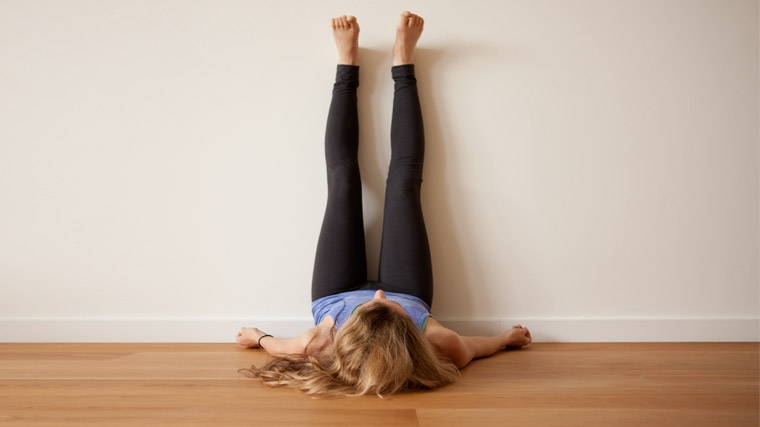
5. Dangling pose
Why: In this Yin yoga pose the aim here is to be loose and to let go of all effort. Dangling gently stretches the lower spine, loosens the hamstrings a little and strengthens the quadriceps. Feel the spine elongating from the hips, as if your body is hanging from a washing line. Think of the head like piece fruit from a tree. Imagine the thoughts draining out from the crown of your head and into the earth.
How: Begin with the feet hip-width apart and with the weight evenly distributed through the soles of your feet, bend your knees and fold forward. If you have any pain in the lower back, bend your knees well and rest your elbows on your knees, if the lower back feels ok, keep the knees slightly bent and clasp the elbows or let the hands rest on the floor (it’s nice to turn the palms up, fingertips turning inwards) Allow your neck to soften, your head to feel heavy and your arms to be limp. Immerse yourself in the flow of the breath and feel the tension drain away…
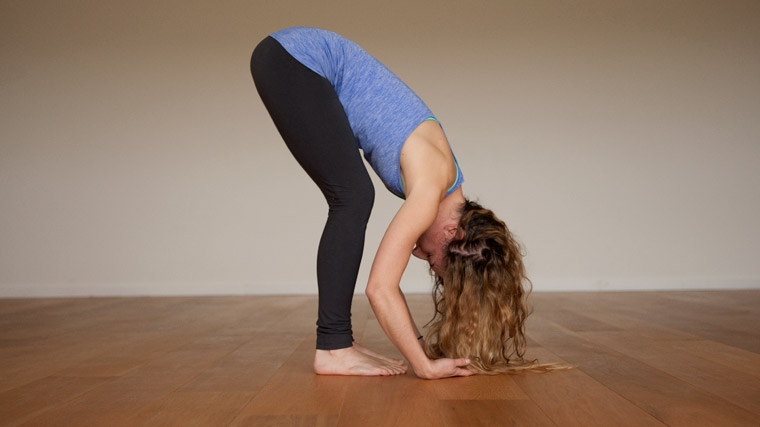
6. Savasana with a bolster
Why: Savasana – traditionally the pose that knits everything together at the end of our yoga class – but another wonderful pose in itself to let our whole body feel its connection with the earth and the presence in Being, rather than the rush of Doing. The physical benefits of Savasana are manifold and include lowered blood pressure, decreased heart rate, slowed rate of respiration and decreased muscle tension but it’s the mental and emotional benefits that makes Savasana one of the most important yoga poses of all.
How: Sit on the floor with legs bent and slide a bolster or rolled up blankets beneath your knees (this takes the weight off your pelvis and provides release for the lower back and lumbar vertebrae). Gently lower your upper body onto the floor and let your arms rest a little away from your body, palms facing upwards. Give your weight to the floor, rather than pushing the floor away. Draw your attention inwards and bring your awareness deep inside. Try and notice where one thought ends and the other begins. Look for the space, like the pauses between your breath. Know that these few moments of just Being may be the kindest thing you can do for yourself all day.
A word of note:
When it’s time to come out of the pose, do it slowly. Not only because it’s safer for your body, but also more gratifying for your mind. Try and take the sense of ease and openness that you’ve cultivated on the mat with you off the mat and into your life.
